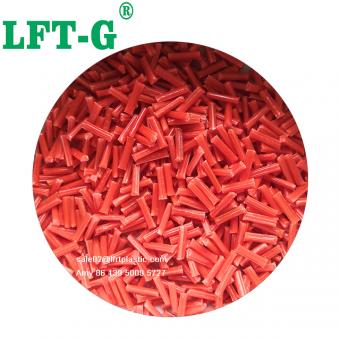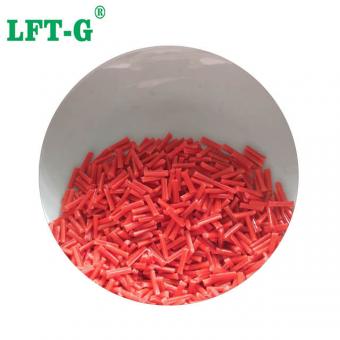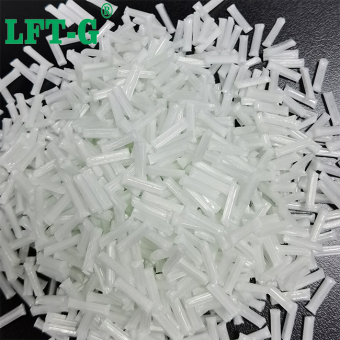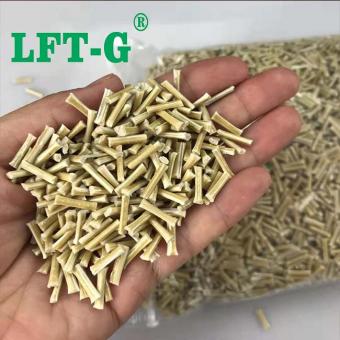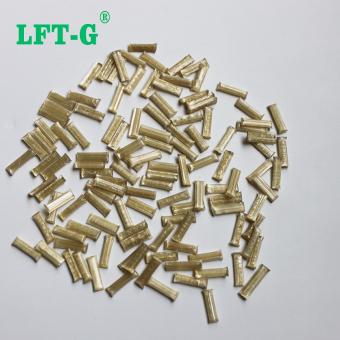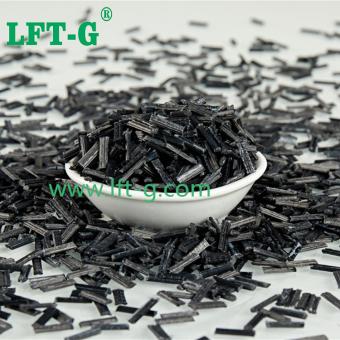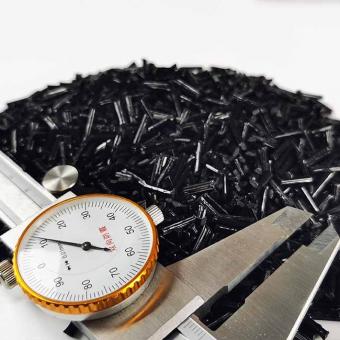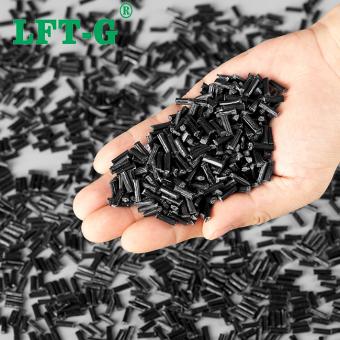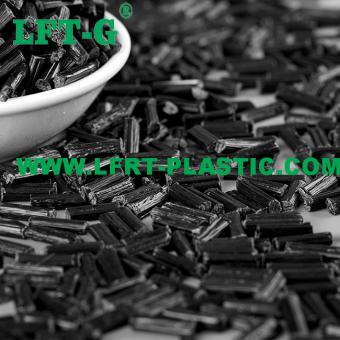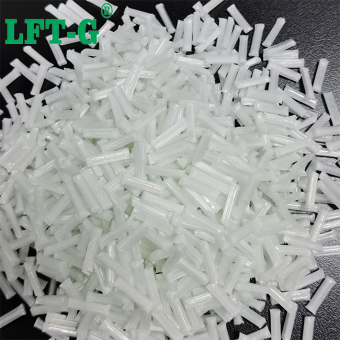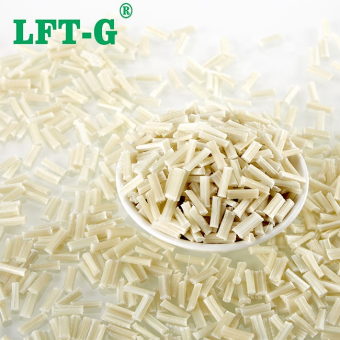-
Baixa distorção dispositivo eletrônico PP Polipropileno com fibra de vidro longa pelotasPP Polipropileno preenchido com fibra de vidro longa copolímero deé um tipo de engenharia modifeid materiais de plástico, de vidro longa reforçado com fibras de polipropileno;
- Baixa distorção dispositivo eletrônico
- De polipropileno com fibra de vidro longa
- PP Polipropileno pelotas
Tags :
-
PP Polipropileno com fibra de vidro longa pelotasPP Polipropileno preenchido com fibra de vidro longa copolímero deé um tipo de engenharia modifeid materiais de plástico, de vidro longa reforçado com fibras de polipropileno;Veja mais
-
PP Polipropileno com fibra de vidro longa pelotas personalizado vermelho coresPP Polipropileno preenchido com fibra de vidro longa copolímero deé um tipo de engenharia modifeid materiais de plástico, de vidro longa reforçado com fibras de polipropileno;Veja mais
-
Matéria-prima composta de fibra de vidro longa de polipropileno 40Introdução do produto O material de polipropileno reforçado com fibra de vidro longa (PP-LGF) tem sido amplamente utilizado na indústria automobilística por causa de suas vantagens de peso leve, alta resistência específica, boa resistência ao calor e reciclagem, etc. Material de polipropileno reforçado com fibra de vidro longa (PP-LGF) tem baixo custo, alta resistência específica e alta resistência ao calor e assim por diante. Desde que foi desenvolvido no início dos anos 1980, a esperança é substituir alguns metais ou plásticos de engenharia em peças de automóveis. Fibra de vidro longa de polipropileno40
- enchimento de fibra de vidro
- custo efetivamente reduzir
- em vez de medalha
- excelente resistência à fluência e à fadiga
- baixo empenamento
- cor personalizada
Tags :
-
PPS Sulfeto de polifenileno composto de fibra de vidro longo plasitc alta tenacidadeNúmero do produto: PPS-NA-LGF Cor do produto: Cor natural Especificação de fibra: 20%-60% Característica do produto: Retardador de chama 94-VO, Alta tenacidade, Baixo empenamento, Resistência à fadiga, Boa aparência do produto. Aplicação do produto: impulsor do aquecedor de água, carcaça da bomba, articulação, impulsor da bomba química, impulsor de água de resfriamento, peças de eletrodomésticos.
- Interruptores de baixa tensão
- Alta tenacidade
- material termoplástico
- cor original
- Baixo empenamento
- resina PPS
Tags :
-
Matéria-prima PPS composto de fibra de vidro longo para peças de eletrodomésticosNúmero do produto: PPS-NA-LGF Especificação de fibra: 20%-60% Característica: Retardante de chama 94-VO, alta tenacidade, baixa deformação, resistência à fadiga, boa aparência do produto Aplicação: impulsor do aquecedor de água, casca da bomba, junta, válvula, impulsor da bomba química, casca, impulsor de água de resfriamento, casca, peças de eletrodomésticos
- 94-VO Retardador de chama
- Impulsor do aquecedor de água
- Invólucro da bomba
- Amostra disponível
Tags :
-
PLA Enchimento de ácido poliláctico Fibra de carbono longa LCF renovável de alto desempenhoPLA information PLA, also known as polylactide, refers to the polyester polymer obtained by polymerization of lactic acid as the main raw material, usually using renewable plant resources (such as corn, cassava, etc.) made of starch as raw material. It is a new type of renewable biodegradable material. PLA material characteristics The raw materials are renewable and relatively easy to obtain even if used as 3D printing materials, which can be used for large-scale production; The PLA has good thermal stability and solvent resistance. The processing temperature of PLA is between 170 ℃ and 230℃, and the finished product has good heat resistance. Good permeability and transparency luster, can be processed by extrusion, spinning, biaxial stretching, injection blow molding and other ways, tensile and bending modulus can be comparable to the traditional plastic resin; High biocompatibility. The monomer material of PLA, L-lactic acid, is an endogenous active substance in human body. Therefore, the finished product printed by 3D printing material PLA is non-toxic to human body and can be absorbed by human body. It has good degradability. Different from the degradation methods of other 3D printing materials, PLA is embedded in the soil and completely degraded by microorganisms in nature under specific conditions to generate carbon dioxide and water. The carbon dioxide generated directly enters the soil organic matter or is absorbed by plants instead of being discharged into the air, which is recognized as an environmentally friendly material. Application of PLA materials Due to the good mechanical and physical properties of PLA material, PLA material is widely used, including various food containers, packaged food, fast food lunch boxes, etc. Ao mesmo tempo, com suas vantagens em compatibilidade e degradabilidade, o PLA também pode desempenhar um grande papel na área médica, que pode ser transformado em material de esqueleto de tecido médico e suporte médico para o corpo humano. Além de sua excelente resistência à tração e extensibilidade, o PLA pode ser produzido por vários métodos de processamento comuns, como moldagem por extrusão por fusão, moldagem por injeção, moldagem por filme soprado, moldagem por espuma e moldagem a vácuo. Sobre nós
- polilactida
- materiais biodegradáveis
- novo plástico renovável
- Composto PLA-LCF
- plástico de baixo empenamento
- uso industrial
Tags :
-
Compostos de PLA da marca lft-g preenchem fibra de carbono longa 20%-60% alto desempenho baixa deformação cor naturalO que é PLA de fibra de carbono? O PLA reforçado com fibra de carbono é um excelente material, forte, leve, com excelente adesão de camadas e baixo empenamento. Possui excelente adesão de camadas e baixo empenamento. Os filamentos de fibra de carbono não são tão fortes quanto outros materiais 3D, mas são muito mais rígidos. A maior rigidez da fibra de carbono significa maior suporte estrutural, mas menor flexibilidade geral . Flexural strength: 57 MPa Melting temperature: 190°C- 230°C Tensile strength: 45.5 MPa . Elongation at break: (73°F) 320% Standard tolerance: 0.05mm Layer thickness: 3mm Shore hardness: 45D Density: 1.3 g/cm3 (1300 kg/m3) Heat distortion: 21% to 85°C Shrinkage: very low when cooled to higher ambient temperatures Characteristics Moderate strain at break (8-10%), so the filaments are not very brittle, but very tough Very high melt strength and viscosity Good dimensional accuracy and stability Easy handling on many platforms Highly attractive matte black surface Excellent impact resistance and lightness Applications of carbon fiber PL A material Carbon PLA is the ideal material for frames, supports, housings, propellers, chemical instruments, etc. It is also particularly preferred by drone manufacturers and RC enthusiasts. Ideal for applications requiring maximum stiffness and strength. Other products you may wonder PA6-LCF PP-LCF PEEK-LCF About Long carbon fiber Long carbon fiber reinforced composites offer siginifacant weight savings and provide optimum strength and stiffness properties in reinforced thermoplastics. The excellent machanical properties of long carbon fiber reinforced composites make it an ideal replacement for metals. Combined with the design and manufacturing advantages of injection molded thermoplastics, long carbon fiber composites simplify the re-imagining of components and equipment with demanding performance requirements. Its widespread use in aerospace and other advanced industries makes it a "high-tech" perception of consumers - you can use it to market products and create differentiation from competitors. About us Xiamen LFT composite plastic Co., Ltd is a brand-name company that focuses on LFT&LFRT. Long Glass Fiber Series (LGF) & Long Carbon Fiber Series (LCF). The company's thermoplastic LFT can be used for LFT-G injection molding and extrusion, and can also be used for LFT-D molding. It can be produced according to customer requirements: 5~25mm in length. The company's continuous infiltration reinforced thermoplastics have passed ISO9001&16949 system certification, and the products have obtained lots of national trademarks and patents. We can offer you: 1. LFT & LFRT material technical parameters and leading edge design. 2. Mold front design and recommendations. 3. Provide technical support such as injection molding and extrusion molding.
- Pelotas PLA lcf 30 polímero
- grânulos pla reforçados de alta resistência e alta tenacidade
- placa de plástico lcf30
- melhores grânulos de fibra de carbono longa pla lcf30
- preço do granulado pla cf20 pla
Tags :
-
LFT-G Homo PP preenchimento Longo fibra de carbono LGF 20-60 moldagem por injeção alta tenacidade e resistência 12mmWhat is the Homo PP? Homopolymerized PP plastics are made by polymerizing a single propylene monomer and do not contain ethylene monomer in the molecular chain. Homopolymerized polypropylene pp plastic has the advantage of better strength. Disadvantages are poor impact resistance (more brittle), poor toughness, poor dimensional stability, easy aging, and poor long-term heat stability performance. PP as a thermoplastic polymer began commercial production in 1957, is the first of the regulated stand-alone polymers. Its historical significance is further reflected in the fact that it has been the fastest growing major thermoplastic and has a very wide range of applications within the thermoplastic field, especially in fiber and filament, film extrusion, and injection molding processes. HPP-LCF Compósitos reforçados com fibra de carbono longa oferecem economia significativa de peso e fornecem propriedades de resistência e rigidez ideais em termoplásticos reforçados. As excelentes propriedades mecânicas dos compósitos reforçados com fibras de carbono longas os tornam um substituto ideal para os metais. Combinados com as vantagens de design e fabricação de termoplásticos moldados por injeção, os compósitos longos de fibra de carbono simplificam a reinvenção de componentes e equipamentos com requisitos de desempenho exigentes. Seu uso generalizado no setor aeroespacial e em outras indústrias avançadas o torna uma percepção de "alta tecnologia" dos consumidores - você pode usá-lo para comercializar produtos e criar diferenciação em relação aos concorrentes. Aplicativo Você pode entrar em contato conosco para obter informações mais detalhadas sobre a aplicação Folha de dados para sua referência Fibra curta VS Fibra longa Fibra de carbono longa Xiamen LFT plástico composto Co., Ltd Xiamen LFT plástico composto Co., Ltd é uma empresa de marca que se concentra em LFT e LFRT. Série longa de fibra de vidro (LGF) e série longa de fibra de carbono (LCF). O termoplástico LFT da empresa pode ser usado para moldagem por injeção e extrusão LFT-G, e também pode ser usado para moldagem LFT-D. Pode ser produzido de acordo com os requisitos do cliente: 5~25mm de comprimento. Os termoplásticos reforçados com infiltração contínua da empresa passaram pela certificação do sistema ISO9001 e 16949 e os produtos obtiveram muitas marcas e patentes nacionais.
- pellets de PP próprios
- grânulos pp reforçados de alta resistência e alta tenacidade
- pp cf40 para preço de conector elétrico
- grânulos pp impermeáveis superiores
- Polipropileno reforçado PP materiais virgens puros
Tags :
-
LFT-G PPS Composto de sulfeto de polifenileno longa fibra de carbono resina termoplástica cor original 12mmPPS Special engineering plastics are engineering plastics with higher overall performance and long-term use temperature above 150℃, PPS is one of them. The carbon fiber reinforced special engineering composites formed by carbon fiber as the reinforcement and these special engineering plastics as the matrix have excellent mechanical properties, wear resistance and high temperature resistance, which can be used in aerospace, marine or medical fields, and in some aspects show more desirable application advantages than thermosetting resins or even metal materials. PPS-LCF Polyphenylene sulfide PPS resin strength and hardness are relatively high, good mechanical properties, adapt to a variety of molding and processing methods, you can achieve secondary precision molding, the dimensional stability of the product is better. Its moisture absorption rate of only 0.03%, low density, melt temperature Tm of 285 ℃, the glass transition temperature Tg of 90 ℃, thermal stability is very good, in the air state, to reach 430 ℃ -460 ℃ before decomposition, high flame retardant grade, 200 ℃ insoluble in most organic solvents, excellent electrical insulation. As a special engineering plastics, PPS advantages are outstanding, but defects also exist, for example, because of the large number of benzene ring to make its impact resistance and elongation is not good enough, but through the carbon fiber reinforced way, can further improve the performance of the material strength and thermal stability, so as to better show the value of the application of the material. Through the carbon fiber reinforced intervention, changing the original insulating properties of PPS into a conductive, anti-static properties, polyphenylene sulfide PPS toughness and strength can be substantially increased and improved, becoming one of the most commonly used composite materials in the aerospace field. It is used in aircraft landing gear, wings, hatches, fuel tank port covers, J-shaped nose cone, cabin interior trim and other components, not only to help increase the impact resistance, high temperature and corrosion resistance of these parts, more through the reduction in mass, to enhance the aircraft load efficiency and reduce fuel consumption. Compared with metal, this composite material has the advantages of low cost and easy processing, the cost can be reduced by 20-50 percent. High bonding must be maintained between the carbon fiber reinforcement and the PPS resin matrix. When the product is subjected to stress, this high bonding helps the interface to transfer the external load to the fibers effectively, which can effectively prevent cracks from debonding between the interfaces, in addition to enhancing the mechanical properties of the composite. To make the resin matrix and carbon fiber reinforcement between the formation of high bonding, we must make the molten state of PPS resin and carbon fiber reinforcement in full contact, full impregnation, so that the fiber body in the case of uniform dispersion to achieve good impregnation effect. Production process Application of PPS-LCF Xiamen LFT composite plastic Co., Ltd We will offer you: 1. LFT & LFRT material technical parameters and leading edge design 2. Projeto frontal do molde e recomendações 3. Fornecer suporte técnico, como moldagem por injeção e moldagem por extrusão. Sobre nós
- PPS polifenilente
- pps lcf40 grânulos matéria-prima
- Extrusão longa de fibra de carbono PPS
- peça de injeção de plástico pps LCf40
- Pelotas de fibra de carbono de polímero PPS
Tags :
-
LFT-G PP Polifenileno compostos de resina termoplástica de fibra de vidro longa amostra de cor original disponívelPP fill Long glass fiber Advantages of glass fiber reinforced PP material in modified PP material. 1、The heat resistance temperature of glass fiber reinforced PP is much higher. 2、The shrinkage of glass fiber reinforced PP decreases a lot, and the rigidity is greatly improved. 3, glass fiber reinforced PP plastic, will not stress cracking, impact resistance improved a lot. 4、After glass fiber reinforced, the burning performance of PP plastic is reduced a lot. 5、After glass fiber reinforcement, the strength of PP is improved, such as: tensile strength, compressive strength, bending strength. The disadvantages of glass fiber reinforced PP material in modified PP material. 1、After glass fiber reinforcement, the transparency of the material decreases. 2、After glass fiber reinforced, the toughness of PP decreases and the brittleness increases. 3、After glass fiber reinforced, the hygroscopic property of PP is greatly enhanced, therefore, it should be dried when injection molding. 4、After glass fiber reinforcement, the melt viscosity of PP increases, the fluidity becomes worse, and the injection pressure increases a lot. 5、After glass fiber reinforcement, the fluidity of PP material is poor, and the injection temperature of reinforced plastic is increased by 10℃-30℃. 6、After glass fiber reinforced, attention should be paid to the surface corrosion treatment and surface hardness treatment of the equipment. 7、After glass fiber reinforcement, during the injection process, glass fiber can enter the surface of plastic products, making the surface of the products become rough. It is necessary to use the mold temperature machine to heat the mold when injection molding, so that the plastic polymer can enter the surface of the products and obtain a higher surface quality. TDS for reference only We have general grade, heat-resistance grade, UV-resistance grade, toughen-resistance grade for you to choose. Application General grade: Car parts, washing machine parts, water pump parts, water treatment components, furniture parts, etc. Heat-resistance grade: Car front and back module, water tank frame, battery bracket, engine cover, skylight frame, etc. UV-resistance grade: Car handle, car mirror parts, battery case, truck outside pedal etc. Grau de resistência endurecido: ferramentas elétricas, carcaça de bomba, conexões de tubos, etc. LGF VS SGF Perguntas frequentes P. A fibra de vidro longa e a injeção de fibra de carbono longa têm requisitos especiais para máquinas de moldagem por injeção e moldes? R. Certamente existem requisitos. Especialmente a partir da estrutura de design do produto, bem como o bico do parafuso da máquina de moldagem por injeção e o processo de moldagem por injeção da estrutura do molde devem considerar os requisitos de fibras longas. P. As causas e soluções para fibras flutuantes para produtos de fibra de vidro longa e fibra de carbono longa. A. Devido à baixa temperatura do sol ou à baixa temperatura do molde e à baixa pressão de moldagem por injeção, a fibra de vidro e a resina podem não ser bem compatíveis e difundidas. A temperatura irregular do molde da superfície do molde causará o problema da fibra flutuante e pode ser resolvido aumentando a temperatura do sol, a temperatura do molde e a pressão de injeção. Q. O PP reforçado com fibra de vidro longa reduzirá a tenacidade do material e aumentará a fragilidade. Existe alguma maneira de resolver este problema? A. A fibra de vidro longa e a fibra de carbono longa aumentam muito o impacto e a resistência à tração do substrato.
- melhores grânulos pp lgf30 de fibra de vidro longa
- pp gf30 para preço de conector elétrico
- compostos de polipropileno para móveis lgf
Tags :
-
LFT-G modificado nylon66 PA66 preenchendo compostos de fibra de vidro longos endurecem o grau de resistência para aparelhos eletrônicosInformação PA66-LGF PA66 é um dos produtos da série de poliéster mais produzidos e amplamente utilizados. Possui alto tamanho de grão, excelentes propriedades de tração, propriedades de flexão, resistência à tração e outras propriedades mecânicas do material, além de excelentes características de temperatura ultrabaixa e propriedades químicas orgânicas. É uma classe de produtos de borracha com ampla gama de aplicações, características estáveis, boas propriedades mecânicas, isolamento de alta qualidade, baixa densidade, fácil processamento e moldagem, autoextinguível e boa resistência ao desgaste. Portanto, é amplamente utilizado em veículos, eletrônicos e elétricos, materiais químicos, equipamentos industriais, painéis de instrumentos, projetos de construção e outras indústrias. No entanto, possui alta absorção de água, baixa resistência a álcalis, impacto seco em temperatura ultrabaixa, baixa resistência à compressão e fácil de deformar após a absorção de umidade, o que afeta a confiabilidade das especificações dos produtos. As pessoas melhoraram o PA66 de várias maneiras, adicionando a fibra química PA66 é uma delas. Depois de adicionar fibra de vidro, sua força de impacto, deformação térmica, propriedades mecânicas do material, processabilidade de moldagem e resistência a ácidos são significativamente melhoradas. A fibra de vidro é uma classe de matérias-primas funcionais com características de alta qualidade. Este modelo de utilidade tem as vantagens de baixo custo, não combustibilidade, resistência a altas temperaturas, resistência a ácidos, alta resistência à tração, resistência à compressão de alto impacto, baixa resistência à tração, propriedades de isolamento de alta qualidade, propriedades de isolamento de alta qualidade, etc. como matéria-prima para melhorar polímeros químicos orgânicos ou materiais e compósitos funcionais. The most important hazard of proportional limits to raw materials is mechanical properties. The material mechanical properties of modified PA66 are also related to the composition of glass fibers. The tensile strength, bending strength and impact compression strength of PA66 increase with the glass fiber composition after the addition of PA66 chemical fibers. The tensile and flexural strengths of the managed system increased linearly, but the glass fiber composition was 30%. The trend of increasing tensile and flexural strengths showed some improvement. The results show that PA66 can produce a reasonable page layer, which can reasonably transfer the ground stress between the matrix and page, and thus improve the compressive strength of the matrix. PA66-LGF TDS The datasheet was tested by Xiamen LFT, for your reference only. PA66-LGF Application Suitable for many fileds, other application you can ask for our technical advice. Details Number Color Length Sample MOQ Port of Loading Delivery time Payment terms PA66-NA-LGF30 Original color (can be customized) 12mm (can be customized) Available 25kg Xiamen Port 7-15 days after shipment Discussed Xiamen LFT composite plastic Co., Ltd Xiamen LFT composite plastic Co., Ltd. is a brand-name company that focuses on LFT&LFRT. Long Glass Fiber Series (LGF) & Long Carbon Fiber Series (LCF). The company's thermoplastic LFT can be used for LFT-G injection molding and extrusion, and can also be used for LFT-D molding. It can be produced according to customer requirements: 5~25mm in length. The company's long-fiber continuous infiltration reinforced thermoplastics have passed ISO9001 &16949 system certification, and the products have obtained lots of national trademarks and patents. We will offer you: 1. LFT&LFRT material technical parameters and leading edge design 2. Mold front design and recommendations 3. Provide technical support such as injection molding and extrusion molding.
- pelotas autodevidas pa66
- pellets pa66 reforçados de alta resistência e tenacidade
- melhores grânulos de fibra de vidro longa pa66 lgf30
- Pastilhas lgf de parafuso duplo PA66 6
- Aplicação de grânulos de fibra longa PA66
Tags :

 o email
o email português
português English
English français
français Deutsch
Deutsch русский
русский italiano
italiano español
español العربية
العربية 日本語
日本語 한국의
한국의 中文
中文












